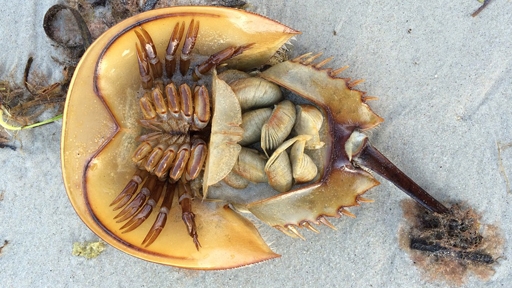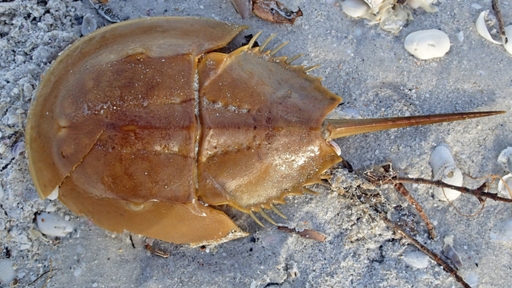This peculiar creature, the horseshoe crab, saves lives every single day (and has probably already saved yours)!
 Image: Pixabay
Image: Pixabay Horseshoe crabs are somewhat primitive-looking marine invertebrates with a tough external skeleton. They thrive in shallow ocean waters and will come to shore periodically to mate. You’ve probably seen one if you frequent the beaches of the US East Coast.
 Image: USFWS
Image: USFWS
They may not look like much on the outside, but the blood flowing through them has extraordinary, life-saving abilities thanks to 450 million years of evolution.
 Image: James St. John
Image: James St. John
Horseshoe crab blood contains cells called amoebocytes. Similar to our white blood cells, amoebocytes defend the body against infections in a fraction of the time. In a reaction taking as little as 45 minutes (compared to two days in mammals), amoebocytes coagulate around bacteria measuring as little as one part per trillion, trapping and immobilizing the invader.
Because of this, scientists use the contents of the blood to test vaccines, IV drugs, and implantable medical devices for contamination. In fact, every drug certified by the FDA must be tested using it. It’s so valuable that one quart of the extract from the blood is worth approximately $15,000.
The Ecological Research and Development Group (ERDG) website states, “If you’ve ever had a flu shot, know someone with a pace maker or joint replacement, or have given your pet a rabies vaccination, you owe a debt of gratitude to the horseshoe crab.”
Another interesting thing about these animals is that they have blue blood instead of red. Where we have the iron-based protein hemoglobin to carry our oxygen, horseshoe crabs have copper-based hemocyanin, which gives it a blue color.
 Image: PBS
Image: PBS
Every year, half a million horseshoe crabs are harvested, brought to a lab to be “bled,” and returned to the sea. While most survive, it’s estimated that up to 30% do not.
These phenomenal creatures been evolving for a staggering 450 million years, but they may not be around for too much longer. These crabs are commonly used as bait or fertilizer, and their populations are declining rapidly due to over-harvesting.




